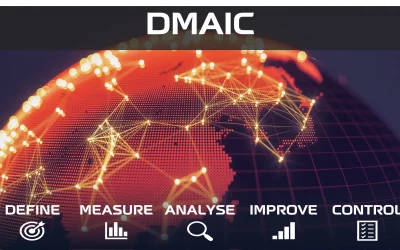If it ain’t broke…
Should we do some process improvement, or should we let the status quo continue? That’s a question troubling many a leader every day. There’s a lot to be said for allowing teams to carry on working the way they are but conversely, sometimes, we have to bite the bullet and make change happen.
What happens if we ask those who work in the process if it needs improving? Usually we receive back a view that ‘everything is OK’. That’s often followed by some well-intentioned soul giving us a jokey ‘if it ain’t broke, don’t fix it’.
Over time, I’ve reached my own conclusion about this throwaway, one liner, phrase. That it’s used as part of a deflecting strategy designed to ensure the status quo is given a fighting chance to remain.
A participant used this phrase for the process we were discussing during a recent workshop. Now, this process’ performance wasn’t terrible but it wasn’t fantastic either.
It was being managed, albeit, that activity took some effort and caused some stress. Customers received a decent, but not spectacular level of service, and there were a few complaints. There were some issues with the P&L due to a high headcount.
You could see how someone could have the opinion that the process ‘wasn’t broke’. Likewise, you could understand why someone would want some process improvement completed.
Should we fix it?
So how should we, as LSS practitioners, react when someone pulls out the ‘if it ain’t broke, don’t fix it’ line?
I take the view that, as improvement practitioners, we’re not paid to think like everyone else. Our job is to seek out process improvement opportunities by challenging the status quo. Put simply, we’re paid to make the boat go much, much faster.
However, if we put our change management hat on, the status quo can make a lot of sense to employees.
Undoubtedly, they’ve worked hard to carve out this process, and to nail down the daily routines necessary to keep it moving. A love/hate relationship with the work and the daily problems will exist. Over time, they will have generated a deep-rooted interest in keeping ‘their baby’ going.
Which is why we should never tackle the use of this phrase head on. There’s no point pushing back as that will put up a gigantic wall that can’t be breached.
The answer to ‘should we fix it?’ Maybe.
But, we’re going to need more understanding and do additional work first.
What is Process Status Quo?
It won’t surprise anyone to learn that I don’t like status quo when it comes to process execution in companies. It’s never sat easy with me.
Having a process execute in ‘status quo’ mode doesn’t mean it’s running well, just that those involved in it have accepted whatever performance is inherent – good, bad, or ugly – and learned to play a tune that
- keeps the bosses at bay and
- allows them to manage all the associated noise the process comes with day to day.
The dictionary definition for status quo is ‘the existing state of affairs.’ In process performance terms, we can translate this to mean acceptance of the existing state. Or, essentially, staying put.
In any competitive environment, staying put over time, is the same as heading backwards since your competitors disappear over the horizon in front of you.
Instead of staying put, we need to focus on moving the quo supporters to a position where they can accept that their process performance might not be where it needs to be. That it needs some healthy process improvement.
The question is, how do you do that without upsetting people?
Turn to facts.
Finding Out If Process Improvement Is Needed
When someone uses the ‘if it ain’t broke, don’t fix it’ phrase, I immediately turn to a three-chord playbook to determine if the status quo is worth preserving.
Each chord is tuned to test a different concept of assessing ‘broke’ and revealing our true process performance. Our chords are:
- Is the process stable?
- Is the process capable?
- Is the process efficient?
Is our Process Stable?
First, by examining process stability, we can see if the key inputs and outputs of this process are stable and predictable over time. We need to collect data for this. When we have it, we create control charts on the inputs and outputs and create distributions over time.
When examined together it will be clear if stability and predictability are present.
Creating this view gives allows us to understand what we call our ‘voice of the process’.
Is our Process Capable?
Second, an evaluation of our process capability will tell us if our process performance is meeting customer expectations. Capability compares the voice of the process we obtained above, to the voice of the customer. It’s a very useful metric, but only works if we have an expectation, or specification, from the customer for the characteristic we are measuring.
Capability is important for our status quo issue as it’s still common that teams do not know or understand customer needs. This can lead them to make conclusions solely based on the voice of the process.
Process capability analysis gives us a customer facing dimension by which to evaluate the status quo.
Is our Process Efficient?
Lastly, we need to ask the question is our process efficient? Efficiency is a broad metric, so we need to break it down into sub-efficiencies which we can explore deeper, depending on the nature of the process. Here’s an example:
- Is the resource usage efficient? (people, material etc)
- Are lead times OK?
- What’s the takt time?
- How much WIP do we have?
- What scrap do we see?
- Does the P&L point to anything?
- Are there any benchmarks we can use?
- Is the throughput efficient?
- What causes delays?
- Are there quality/rework issues?
- How does the flow look?
Clearly, we can’t answer all those immediately, so it takes some pre-work, some digging, some data collection, some analysis.
Will We Fix It?
When we have our process performance facts to hand, we can take them into the next meeting and tackle the ‘if it ain’t broke, don’t fix it’ statement head on.
If our stability, capability, and efficiency are all good, then definitively, it ain’t broke and there’s no need to fix it.
I long for that day.
Until then, it’s workshop time and together, we can change our process performance and make the boat go much, much faster.










0 Comments